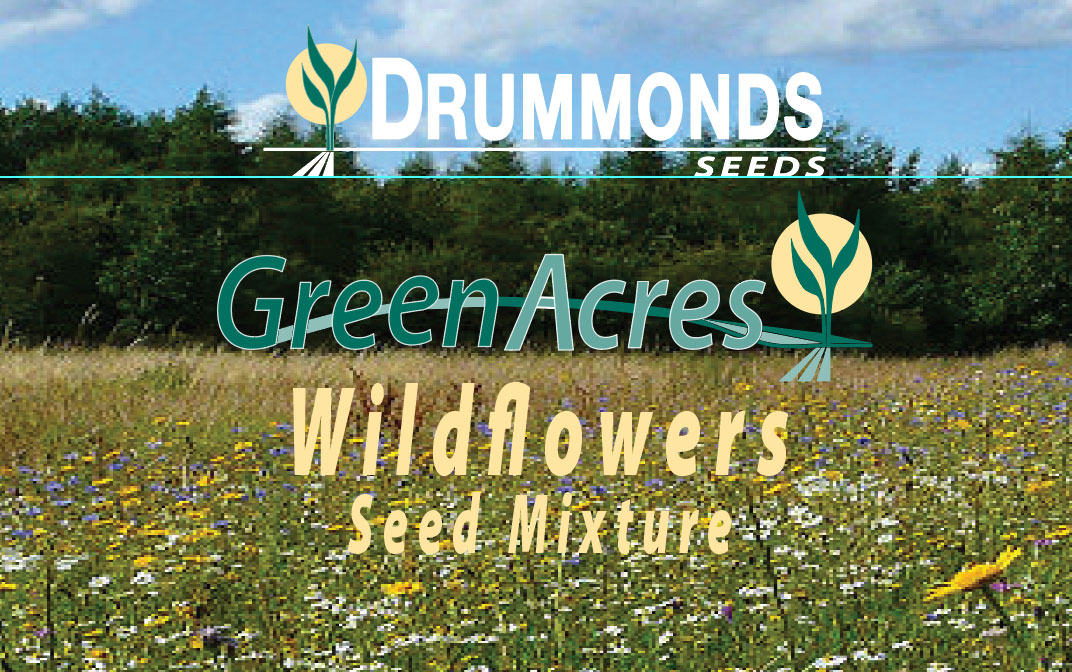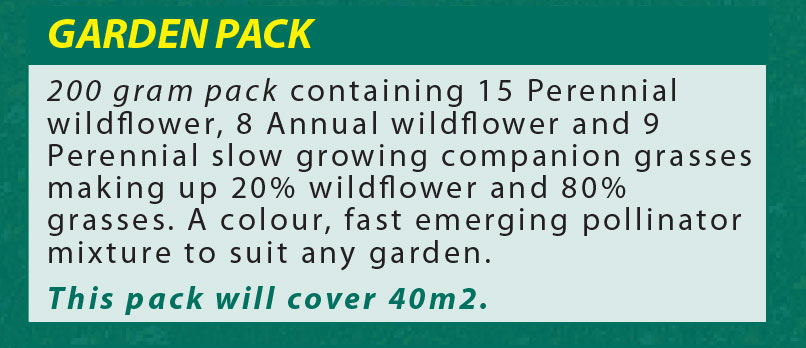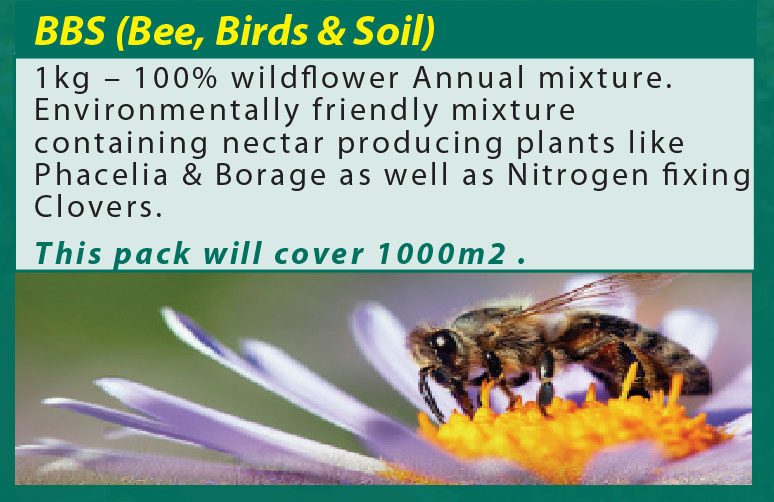 |
 |
 |
 |
 |
MANAGING YOUR WILD MEADOW
Cutting is key to controlling weed populations in your wild meadow but it should be allowed to flower before cutting, especially in its first few years. After cutting, clippings can be removed. This helps decrease the fertility of the soil so favouring delicate wildflowers. If you have very poor growth on thin soil, then cuttings can be left to build soil organic matter. Once successfully established, your wild meadow should be permanent, and will improve and evolve with age.
Wildflowers provide a green space for fauna and flora whilst also being visually pleasing. A wildflower meadow is an area of permanent grass where wildflowers grow – usually on poorer soils or reclamation areas such as roundabouts, road verges or the bald patch in your garden. Wildflower meadows grow better on unproductive soil, where vigorous grasses don’t out-compete the flowers. Generally wild flowers are sown from March to May in the spring and late August to October in the autumn.
Mixtures can vary but are usually made up of perennial or annual wildflowers such as birds-foot trefoil, common sorrel, cowslip, field scabious, hoary plantain, meadow buttercup, ox-eye daisy amongst many others. Most mixtures will also contain companion grasses such as bents, fescues and crested dogstail.
Sowing rate
Sowing rates will vary depending on the mixture. For 100% wildflower mixtures it advised to use 2 grams/sq. metre and 5 grams/sq.metre for a wildflower & grass mix. Rates can be increased where there is existing grass – in this case it may be better to use a 100% wildflower mix. Ideally, weeds in the area would be controlled before the seeds are broadcast. Problem weeds are docks, thistles and nettles as these cannot be removed easily once the meadow area is sown.
Once weeds have been dealt with, prepare a fine, but firm and well-worked seedbed and give it a roll. Then broadcast the seeds by hand or using a spinner. Once this is done, harrow or rake the area, then roll it again to ensure the seeds are in good contact with the soil.
Overseeding
If an existing meadow starts to look thin, then it is possible to overseed with just wildflower seeds, although to do this successfully the area must be cut and harrowed well, beforehand to ensure the seeds reach the soil. The aim for wildflower meadows is to allow a natural ‘seedbank’ to build up over time but by overseeding to the existing meadow we can help this process.
Prescription Mixtures made to order.
If you wish to discuss the design of a customised seed mixture, please speak directly with our specialists in Drummonds Drogheda. Tel 041 983 8986
